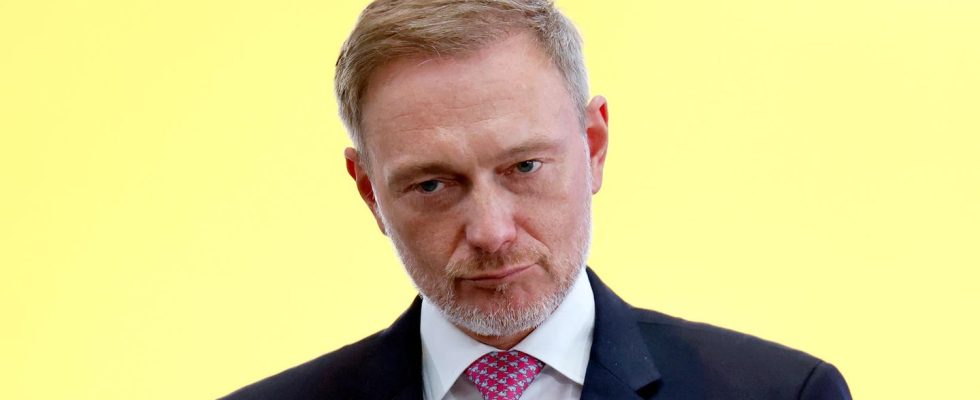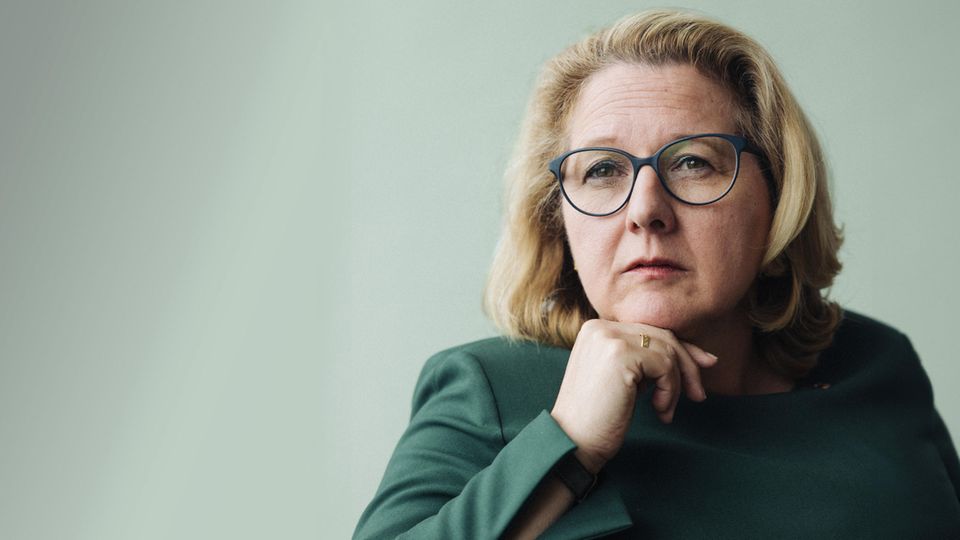The traffic light colleagues had to submit their spending requests to Finance Minister Christian Lindner by May 2nd. Savings plans are unlikely to be included. Will this happen to the 2025 budget? The most important questions and answers.
How much money is actually involved?
The budget hole is big. There are a lot of numbers circulating, but all estimates have one thing in common: they are significantly higher than the 17 billion euros that had to be scraped together for the 2024 budget – that in itself was hard political work. Now there is a gap of 30 to 40 billion euros, according to the coalition. Based on the medium-term financial planning that the traffic light cabinet had drawn up last summer, the 2025 budget envisages expenditure of 452 billion euros – 25 billion euros less than 2024 (477 billion euros). That would still be a hefty amount that needs to be saved.
How big the hole actually is and how painful the calculation depends on several factors. Many people are looking forward to the tax estimate on May 16th: if it turns out better than expected, more money would be available. The relatively weak but stabilizing economy could also contribute to the easing of tensions. A bit of residual hope in the subjunctive.
Isn’t that actually government routine?
From the outside, it may sound quite simple: the little bit of housekeeping. It’s the same every year. Post income, plan expenses – done. After all, it’s all about numbers, albeit ones whose seemingly endless series of zeros you can’t even type into your cell phone calculator. Yes, it’s a lot of money. And that’s exactly why a budget like this can be both a routine and a borderline experience for a government.
There are concrete projects behind the numbers. What can and do the SPD, Greens and FDP want to afford? Or, this year the more relevant question: What do they have to do without?
The dispute over money reveals the coalition’s conflicts, both small and fundamental. The SPD and the Greens would like to give themselves more leeway through tax increases, a renewed suspension of the debt brake, or at least a reform of it. None of this was and cannot be done with the FDP. The Constitutional Court’s ruling last December also ensured that the last financial buffer that had been tricked into existence immediately after taking office was gone. Annoying, but not something that can be helped.
This 2025 budget is the last that the traffic light coalition has to decide on – and at the same time the most difficult.
Why is this so difficult again?
The simple answer is: the traffic light partners are making life difficult for themselves. The SPD annoys the FDP almost every day about the need to apply the debt brake. The Greens are persistently demanding billions for basic child welfare without being able to convincingly explain to the SPD and FDP how they arrive at the sum. And although the FDP publicly admits that it is an austerity nerd, it would like to abolish solidarity for everyone, which would further increase the budget gap.
It’s all pretty tiring, isn’t there any other way?
The slightly more complex answer is: No, it obviously doesn’t work. In this coalition, each partner must always remember what they themselves would like to do, but which – unfortunately, unfortunately – fails because of the others. In addition, this household is not just a household. Finance Minister Lindner wants to use him to initiate the “economic turnaround” called for by the FDP. The German economy should finally grow properly again. A goal that Vice-Chancellor Habeck also sees himself committed to, albeit with different ideas about which way would make the most sense.
Now the two of them just have to convince Olaf Scholz. The Chancellor can’t stand it when someone badmouths the German economy. And yet he will have to come to an agreement with Habeck and Lindner. In the worst case, there is a risk of coalition collapse. The FDP’s announcement for this summer is: No budget without an economic turnaround!
Who needs to save – and who doesn’t?
In principle, all departments have to cut back. For the first time in a long time, the departments should not only be allowed to spend less money than originally planned, but also less in real terms than last year. Only one person is exempt from the austerity dictate: Defense Minister Boris Pistorius from the SPD. Keyword: turning point. He has already warned of an “arms freeze” for the Bundeswehr if he does not receive at least 6.5 billion more.
In principle, all other cabinet colleagues also have a lot of understanding that the good years are over – as long as their own department is spared. That’s why no one will initially stick to Lindner’s guidelines. “I am resisting the cuts. These savings would be a mistake,” said Development Minister Svenja Schulze, SPD, recently star-Interview before. This may save money in the short term, but cost money in the medium term, because: “In the end, our prosperity depends on us being networked abroad.”
Schulze is not the only minister whose reported financial needs are well above the Lindner limit. In the case of Annalena Baerbock, it is reportedly worth more than two billion euros. Instead of 7.2, the Foreign Office will only be allowed to spend 5.1 billion euros next year, as “little” as before the Ukraine war. However, the country still needs a lot of support, for example in defending against cyber attacks. Germany is also fighting against disinformation and humanitarian disasters from Gaza to Sudan. And finally, additional staff are needed to speed up the issuing of visas for urgently needed foreign skilled workers.
Sounds plausible? All other departments will present similarly good reasons and even more noble motives. From now on we’ll haggle. And the Mikado principle applies: whoever twitches first loses.
Who is being fleeced?
Someone’s going to have to bleed. Who will it be this time? As part of the budget preparation for 2024, it was farmers who were to have their agricultural diesel subsidies removed. After extensive protests, the government gave in and partially withdrew planned cuts. The fundamental problem remained: the SPD and the Greens want to expand the financial scope through new debt, while the FDP wants to get by with the money that is there. However, it is becoming apparent that the traffic light could adjust the so-called economic component this year – that would be a partial reform of the debt brake that does not require the votes of the Union. Basically, the debt scope would increase, but probably only marginally: a revision could bring in a single-digit billion amount, as we hear.
And what’s next?
The budget draft is due to go through the traffic light cabinet on July 3rd, and the first reading in the Bundestag will then take place, as always, after the summer break in September during the budget week. At least if everything goes according to plan. It is by no means certain whether the government will be able to agree on a draft budget in July.
If the ministries report higher spending requests to the finance minister, this would likely result in one-on-one discussions: Scholz, Habeck and Lindner would then have to personally discuss with the respective ministers where there is still savings potential in the houses. Not only are there likely to be heated discussions, the format would also be a logistical challenge.
The Chancellor, his Vice Habeck and Vice-Vice Lindner would have to find a joint appointment with the ministers – between commitments at home and abroad – to explore possible solutions. There are still eight weeks left until July 3rd. Quite turbulent, as one can assume.


